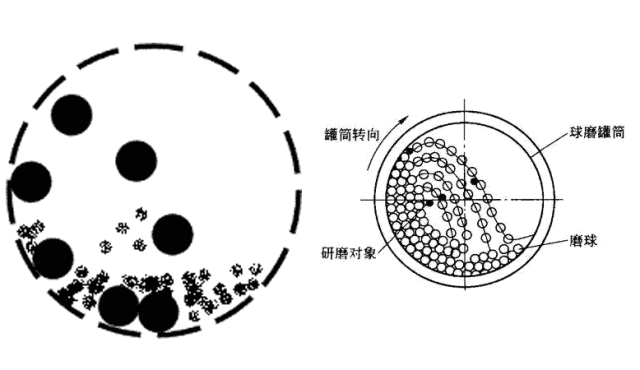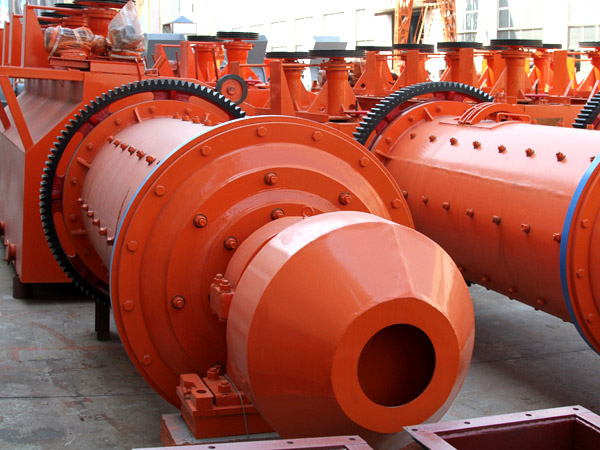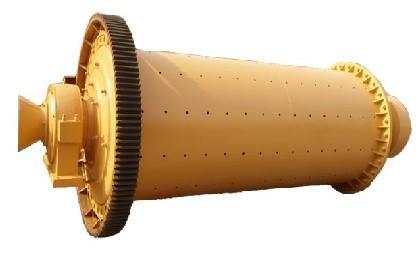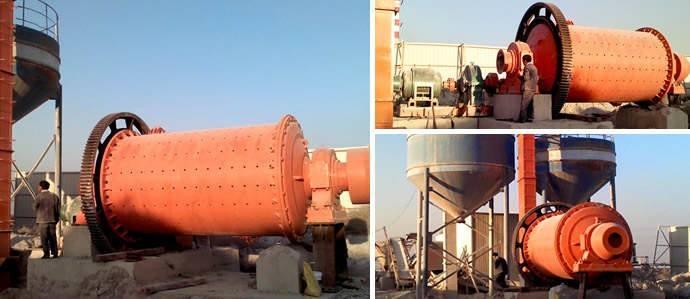News
How to distinguish between dry ball mill and wet ball mill?
Date:2021-11-03 04:00:01
Ball mill is the key equipment for grinding materials after crushing. Ball mill is filled with a certain number of steel balls, steel segments or ceramic balls in its cylinder as the grinding medium.
The ball mill is generally suitable for grinding 40-200 mesh powder. The output ranges from 1 ton to 600 tons per hour.
The ball mill is suitable for the beneficiation of non-ferrous and ferrous metals, and can also be used in large cement plants, refractory plants, smelters, lime plants, etc.
Wet grinding mill and dry grinding mill
Ball mills are divided into dry ball mills and wet ball mills. Wet milling is the most commonly used method with high efficiency and uniform powder particles.
Because the particles are in the grinding process, large particles will appear cracks under the grinding and impact of the grinding medium of the ball mill, and the cracks will break into small particles over time, which is the so-called grinding process.
If it is a dry ball mill, when the cracks of the particles propagate during the ball milling process, due to the grinding medium (steel balls) or the extrusion between the particles, the formed cracks may be squeezed and "closed", the cracks cannot be effectively expanded, and the large particles will Can not quickly break to form small particles.
However, if it is a wet ball mill, then the liquid ball milling medium (water or absolute ethanol, etc.) will enter the cracks formed, blocking the cracks from closing, which will effectively make the cracks expand rapidly and greatly improve the efficiency of ball milling.
For dry ball mills, it is generally aimed at materials that do not react in the liquid medium. If there is a reaction, other substances will be formed in the ball mill, and the grinding is meaningless. For example, cement cannot be ball milled in water. At the same time, during dry grinding, due to the design of the ball mill tank, sometimes dead corners are formed, and some materials in the dead corners cannot be ball milled;
Wet ball mills also have a weakness, that is, the powder after wet milling has to be dried to remove moisture or other liquid media, which will increase energy consumption and cost.
Wet grinding can mix two or more materials better than dry grinding. If you want to achieve mechanical alloying, dry grinding and high ball-to-battery ratio are generally used. In wet grinding, the relationship of ball: material: water (or other liquid) = 4:2:1, or make small adjustments within this range, the specific can be determined by experiments, and the size of the ball is also graded It is required that if the ratio is good, the milling efficiency of the raw materials will be greatly improved. Generally, there are large, medium and small balls, and the best ratio between them can also be obtained through experiments.


How to distinguish between dry ball mill and wet ball mill?
1. Different equipment structure
The discharge port of the dry ball mill is straight cylindrical and is equipped with an air-inducing device to discharge dust; the discharge port of the wet ball mill is horn-shaped with a built-in screw device for easy discharge. Most of the wet ball mills sold in the market have high grinding fineness and good beneficiation effect.


Dry Ball Mill
2. Different working principles
The dry ball mill is a cylindrical rotating device, driven by an outer gear, two bins, and a grid type ball mill. The material is evenly spirally fed into the first bin of the mill from the feeding device through the feeding hollow shaft. The wet ball mill needs to add liquid medium during the grinding process, and care must be taken to control the grinding concentration properly. The amount of water added is generally determined by the use of the mud, the amount of clay in the formulation, and the water absorption value of the clay. The material is gradually crushed under the action of impact and grinding.


Wet Ball Mill
3. Different applicable conditions
During dry grinding, due to the design of the barrel, sometimes dead corners are formed. Some materials in the dead corners cannot be ball milled. However, wet grinding also has a weakness compared with dry grinding, that is, the powder after wet grinding must be dried and removed. Moisture or other liquid media will increase energy consumption and cost. Wet grinding cannot be used for cement.
Matters needing attention in the use of ball mill
After the ball mill is used for the first time and continuously rotated for one month, the lubricating oil must be replaced once. All lubricating oil should be removed during the replacement, and the ball mill should be thoroughly cleaned, and then replaced with new lubricating oil. In the subsequent use of the ball mill, the lubricating oil must be replaced every six months of operation.
When the ball mill is running, the temperature of the lubricating oil of the main bearing, the transmission shaft, and the reducer should be kept below 55 degrees Celsius, and the highest should not exceed 60 degrees Celsius. Otherwise, the ball mill must be stopped and inspected in detail.
Product List



